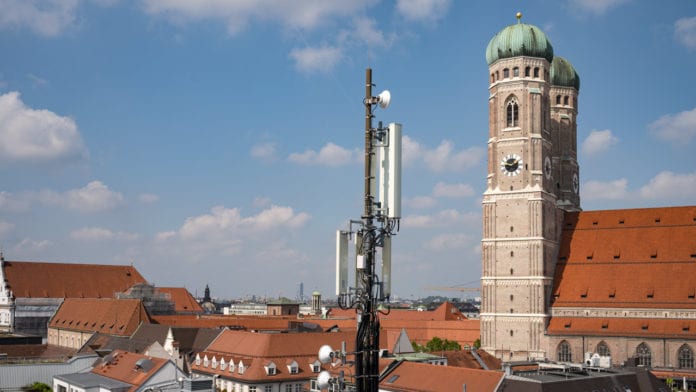Telefonica Deutschland building out 5G using 3.6 GHz; plans to deploy in 700 MHz and 1800 MHz
German operator Telefónica Deutschland / O2, controlled by Spanish telco Telefónica, is currently reaching 30 cities with its 5G technology, the operator said in a release.
The telco said that its current 5G network coverage is being provided by a total of approximately 1,000 5G antennas.
“We are bringing our O2 5G network to more and more cities and also rural regions,” said Mallik Rao, Chief Technology & Information Officer of Telefónica Deutschland / O2. “We are focusing on an intelligent mix of real 5G, DSS and state-of-the-art network technologies. By the end of the year, we already want to cover more than 30% of the German population with 5G and provide a nationwide 5G network by 2025.”
The European telco said it aims to build around 6,000 5G antennas in the 3.6 GHz frequency band in 2021. In addition, there will be several thousand more 5G stations over 700 MHz and 1800 MHz.
Telefonica Deutschland also said that it is working to launch its 5G standalone network in the country before the end of 2021. For the 5G core network, the carrier has chosen network equipment supplier Ericsson in 2020 and has already conducted initial 5G standalone tests.
“We already set the course for our powerful, standalone 5G network. Gigabit data rates, real-time communication and massive IoT are becoming reality in our O2 network. We are currently implementing a completely independent, standalone 5G core network with full cloud compatibility until the course of this year, which will be the basis for all further real 5G activities, Rao recently said in an interview with RCR Wireless News. “We have a clear plan for the further development of our network infrastructure towards a nationwide standalone 5G network that can handle the massive data streams of the future and open up new digital business models for all our customers.”
The telco also claims to be the first German network operator to bring the vendor-independent Open RAN technology out of the lab and into the O2 live network. Open RAN sites have already been transmitting since December 2020 in Landsberg am Lech – Germany’s first Open RAN City. From the fall of 2021, O2 will convert further locations to Open RAN.
Rao had also highlighted that O2 was also working on real 5G use cases with its cooperation partners and enterprise customers. “We have extensive know-how in the construction and operation of private networks, for example for 5G campus solutions. These are of particular interest to business customers and industrial companies that need local networks for their production and logistics sites.”

